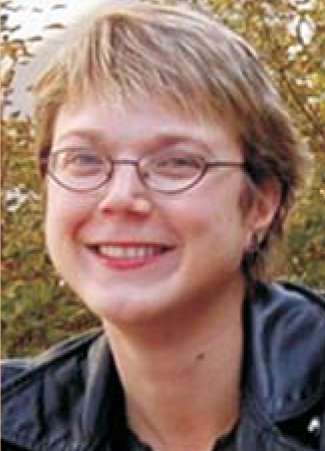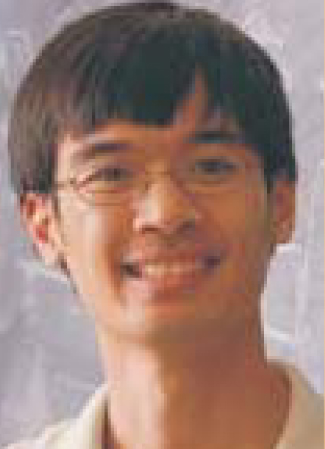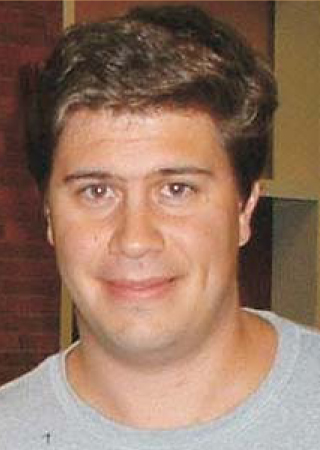MacArthur foundation names fellows
DOI: 10.1063/1.2435690
A bioengineer is developing new tissue-engineering methods and synthetic regenerative technologies for cells. A mathematician brings technical brilliance and insight to formerly intractable problems. A deep-sea explorer hopes to arrest and reverse the worldwide trend of marine ecosystem degradation. A cosmologist is piecing together the early history of the universe.
The originality, creativity, and potential of these four people were recognized when they were named 2006 MacArthur fellows. Linda Griffith, Terence Tao, Edith Widder, and Matias Zaldarriaga were among 25 people so honored in September by the John D. and Catherine T. MacArthur Foundation. The designation carries an unrestricted grant of $500 000 over the next five years.
Griffith, a professor in the departments of biological engineering and mechanical engineering at MIT, where she is also director of the Biotechnology Process Engineering Center, is discovering ways to use biomedical engineering and its applications for diagnosing disease and regenerating damaged organs.
According to the foundation, Griffith has designed ways to build scaffolds to which cultured cells can adhere. Early on, she used linear polymer gels cross-linked by electron-beam radiation to form star-shaped structures. More recently, she developed a solidphase method using L-lactic acid for precisely controlling the pore size and surface chemistry of three-dimensional substrates. With this technique, Griffith has explored the optimal conditions—including pore size, growth media, cell density, and fluid dynamics—for liver cells to live and organize into physiologically functional units.
With her results, said the foundation, Griffith is developing a tool for exploring the normal function of the liver and the mechanisms of disease that attack it; her goal is to reduce the need for future organ replacement or regeneration. Her latest experiments expand the use of 3D scaffolds for growing other cell types, including blood-forming cells; as with the liver culture studies, those experiments provide a basis for creating in vitro models of toxicity and cancer metastasis.
Considered a child prodigy in his youth, mathematician Tao works primarily on partial differential equations, harmonic analysis, combinatorics, and number theory. He has made significant advances in problems such as Horn’s conjecture, which he and Allen Knutson showed can be reduced to a geometric combinatorial configuration known as a honeycomb. The problem has deep implications for more abstract mathematical relationships in algebraic combinatorics. Tao’s analysis of the Schrödinger equation has provided new avenues for solving nonlinear partial differential equations. Recently, with Ben Green, Tao offered a proof of the longstanding conjecture that there exist arbitrarily long arithmetic progressions consisting only of prime numbers.
“When I was in school,” said Tao, a mathematics professor at UCLA, “I was fascinated by the abstract puzzlesolving aspect of mathematics; while I still enjoy that component nowadays, I am now much more interested in how progress in mathematics can lead to greater insights and understanding not only about the behavior of mathematical objects, but also of various phenomena and systems in the physical world.” He adds, “The feeling of understanding one gets when one finally ‘gets’ a result or concept in mathematics is an extremely satisfying one, and is perhaps one of the great rewards of this subject.”
Some of Tao’s work has links to physics. “In partial differential equations … I study the long-time stability and regularity properties of various equations which arise as simplified model equations in physics (e.g., nonlinear Schrödinger equations, classical Yang-Mills equations, or wave-maps equations),” he explained. “It does seem that progress on these theoretical problems will eventually lead to better physical understanding of phenomena such as singularity formulation, as well as better numerical methods to simulate these phenomena, but I would say that it will take some time for recent mathematical progress in these equations to get converted into these more practical forms.”
Tao will use the grant money to support his travel and research and added that he will continue to do research, teach, and advise graduate students. “These are the ways in which I feel I can contribute best to mathematics,” he said.
Widder, president of and senior scientist at the Ocean Research and Conservation Association of Fort Pierce, Florida, is deeply troubled by damage to the world’s oceans and marine life systems. Her work focuses on developing technology to identify the extent of the damage.
“We’re putting ourselves at huge risk,” Widder said about overfishing and coastal development that has destroyed ecosystems around the world. “One of my great concerns is, we don’t have a lot of time. If our oceans are in trouble, the planet is in trouble. Just because [people] can’t see it doesn’t mean it’s not happening.”
For much of her career, Widder was an undersea explorer, but once she began to realize how severely the world’s oceans and marine systems were being harmed, she changed direction and made it her life’s work to publicize the increasing degradation and damage being wrought and to continue to identify and monitor it.
Right now Widder and the association are working on developing two ocean-monitoring systems: a low-cost wireless network that would report on water quality worldwide and a deep-water system for gathering and reporting general, continuous data that cannot be retrieved from a traditional single sample of ocean water. That system would use a low-light camera that can photograph underwater sea life without disrupting it or scaring it away, Widder explained. The camera uses a photomultiplier tube and a red LED activated by flashes of bioluminescence. “Nets capture only the slow, stupid, and greedy,” Widder said. “We need to be able to see into the depths of the ocean without disturbing [anything]. This is an unobtrusive window into the deep sea.”
The MacArthur grant, she said, is hugely significant because it publicizes her message, recognizes the value of her work, and provides funding to support it. “The money will be used directly for our efforts to protect the ocean,” Widder stated. “It is a great stamp of approval from a major foundation, and the fantastic thing about it is the door it is opening. We now have a voice that otherwise would have taken many years to establish.”
Zaldarriaga is a theoretical astrophysicist who analyzes faint signatures of the Big Bang to piece together the early history of the cosmos, the foundation said. Early in his career, Zaldarriaga cowrote computer software known as CMBFAST, which has become a standard tool for astronomers interpreting observations of the cosmic microwave background (CMB); it has been used to estimate the total density of mass and energy in the universe. His analyses reveal the power of lensing, polarization, and other observations of the CMB for generating gravitational maps of the early universe and for indirectly exploring the properties of otherwise undetectable matter in the intervening space. Zaldarriaga is also adept at identifying the interpretive pitfalls in analyzing experimental data; his insights have directly affected the design of telescopes currently being constructed.
Recently, he and his colleagues have argued that the period after the Big Bang but before the formation of the first stars could be indirectly observed by examining CMB variations at the 21-cm wavelength. That proposal, said the foundation, may offer an experimental window into events that previously were matters of conjecture.

Griffith
MIT


Tao
MACARTHUR FOUNDATION


Widder
TOM SMOYER


Zaldarriaga
HARVARD U.





